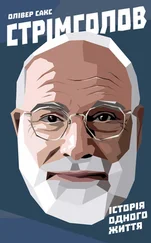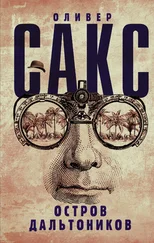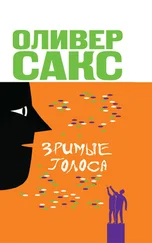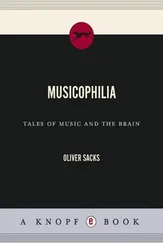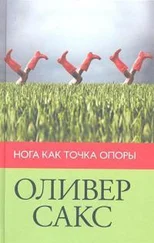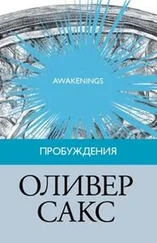Abe also spoke of the hellish phosphorus bombs used in the Great War, and how there was a move to ban these, as poison gas had been banned. But now, in 1943, they were being used freely once again, and thousands of people on both sides were being burned alive in the most agonizing way possible.
Phosphorus, oxidizing slowly, was not the only element to glow when exposed to air. Sodium and potassium did this too, when they were freshly cut, but lost their luminosity in a few minutes as the cut surfaces tarnished. I found this by chance as I was working in my lab late one afternoon, as it gradually darkened into dusk – I had not yet switched on the light.
Equally important were cathode-ray tubes, which were now being developed for television. Abe himself had one of the original television sets of the 1930 s, a huge, bulky thing with a tiny circular screen. Its tube, he said, was not much different from the cathode-ray tubes that Crookes had developed in the 1870 s, except that its face was coated with a suitable phosphor.
Cathode-ray tubes in use for medical or electronic apparatus were often coated with zinc silicate, willemite, which emitted a brilliant green light when bombarded, but for television one needed phosphors that would give a clear, white light – and if color television was to be developed, one would need three separate phosphors with exactly the right balance of color emissions, like the three pigments in color photography. The old dopants used in luminous paints were quite unsuitable for this; much more delicate and precise colors were needed.
Uncle Abe also showed me other types of cold light. One could take various crystals – like uranyl nitrate crystals, or even ordinary cane sugar – and crush them, with a mortar and pestle, or between two test tubes (or even one’s teeth), cracking the crystals against one another – this would cause them to glow. This phenomenon, called triboluminescence, was recognized even in the eighteenth century, when Father Giambattista Beccaria recorded:
You may, when in the dark frighten simple people only by chewing lumps of sugar, and, in the meantime, keeping your mouth open, which will appear to them as if full of fire; to this add, that the light from sugar is the more copious in proportion as the sugar is purer.
Even crystallization could cause luminescence; Abe suggested that I make a saturated solution of strontium bromate and then let it cool slowly in the dark – at first nothing happened, and then I began to see scintillations, little flashes of light, as jagged crystals formed on the bottom of the flask.
The same phenomenon, I read, had been used ingeniously to make self-luminous buoys – these were encircled by rings of strong glass tubing containing mercury under reduced pressure, which would be swirled against the glass and electrified by the motion of the waves.
Shoe shops everywhere in my boyhood were equipped with X-ray machines, fluoroscopes, so that one could see how the bones of one’s feet were fitting in new shoes. I loved these machines, for one could wiggle one’s toes and see the many separate bones in the foot moving in unison, in their almost transparent envelope of flesh.
Dentists were especially at risk, holding small X-ray films inside their patients’ mouths, often for minutes at a time, for the original emulsions were very slow. Many dentists lost fingers by exposing their hands to X-rays in this way.
Henri Becquerel’s grandfather, Antoine Edmond Becquerel, had launched the systematic study of phosphorescence in the 1830 sand published the first pictures of phosphorescent spectra. Antoine’s son, Alexandre-Edmond, had assisted in his father’s research and invented a ‘phosphoroscope,’ which allowed him to measure fluorescences that lasted as briefly as a thousandth of a second. His 1867 book, Lumiere , was the first comprehensive treatment of phosphorescence and fluorescence to appear (and the only one for the next fifty years).
In 1998 I spoke at a meeting for the centennial of the discovery of polonium and radium. I said that I had been given this book when I was ten, and that it was my favorite biography. As I was talking I became conscious of a very old lady in the audience, with high Slavic cheekbones and a smile going from one ear to the other. I thought, ‘It can’t be!’ But it was – it was Eve Curie, and she signed her book for me sixty years after it was published, fifty-five years after I got it.
Becquerel had been the first to note the injury that might result from radioactivity – he discovered a burn on himself after carrying a highly radioactive concentrate in his waistcoat pocket. Pierre Curie explored the matter, allowing a deliberate radium burn on his arm. Yet he and Marie never fully faced the dangers of radium, their ‘child.’ Their laboratory, it was said, glowed in the dark, and both, perhaps, were to die from its effects. (Pierre, weakened, died in a traffic accident; Marie, thirty years later, from an aplastic anemia.) Radioactive specimens were sent freely in the post, and handled with little protection. Frederick Soddy, who worked with Rutherford, believed that handling radioactive materials had made him sterile.
And yet there was ambivalence, for radioactivity was also seen as benign, as healing. Besides thorium inhalers, there was thorium toothpaste, made by the Auer Company (Auntie Annie used to keep her dentures overnight in a glass with ‘radium sticks’), and the Radioendocrinator, containing radium and thorium, to be worn around the neck to stimulate the thyroid or around the scrotum to stimulate the libido. People went to spas to take the radium water.
The most serious problem arose in the United States, where doctors prescribed the drinking of radioactive solutions such as Radithor as rejuvenating agents, as well as to cure stomach cancer or mental illness. Thousands of people drank such potions, and it was only the highly publicized death in 1932 of Eben Byers, a prominent steel magnate and socialite, that put an end to the radium craze. After consuming a daily radium tonic for four years, Byers developed severe radiation sickness and cancer of the jaw; and he died grotesquely as his bones disintegrated, like Monsieur Valdemar in the Edgar Allan Poe story.
Retaining his flexibility of mind to the last, Mendeleev renounced his Etheric hypothesis the year before he died, and acknowledged his acceptance of the ‘unthinkable’ – transmutation – as the source of radioactive energy.
The Ether was pressed into many other uses, too. For Oliver Lodge, writing in 1924, it was still the needed medium for electromagnetic waves and gravitation, even though the theory of relativity, by this time, was widely known. It was also, for Lodge, the medium that provided a continuum, a matrix in which discrete particles, atoms and electrons, could be embedded. Finally, for him (as for J.J. Thomson and many others), the Ether took on a religious or metaphysical role, too – it became the medium, the realm, where spirits and Mind-at-large dwelled, where the life force of the dead maintained a sort of quasi-existence (and could perhaps be summoned forth by the efforts of mediums). Thomson and many other physicists of his generation became active members, founders, of the British Psychical Society, a reaction, perhaps, against the materialism of the time and the perceived or imagined death of God.
After reading about this, I wondered whether any radioactive substances actually felt warm to the touch. I had small bars of uranium and thorium, but they felt as cool as any other metal bars. I once held Uncle Abe’s little tube, with its ten milligrams of radium bromide, in my hand, but the radium was no bigger than a grain of salt, and I felt no warmth through the glass.
Читать дальше

